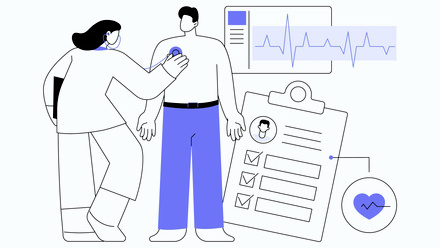Why data-led strategies are key to better worker health and wellbeing
As populations age and work patterns change, companies are recognising the need for more personalised approaches to employee wellbeing.
With a one-size-fits-all approach no longer appropriate, employers are turning to technology and data to inform their strategies and tailor their offerings.
According to a 2023 United Nations report, the number of people worldwide aged 65 and older is expected to more than double by 2050. As a result, employers are starting to address the health challenges facing older workers, from providing private medical care to offering support for gender-specific health issues such as menopause and male cancer.
Flexible working practices are also driving the need for more flexible health solutions, with remote and hybrid working presenting new health risks. To address these needs, employers are increasingly turning to a range of digital healthcare solutions, from virtual GPs to wearable devices and diagnostic tools and taking a preventative rather than curative approach to employee health.
To ensure they are offering the right support and getting the most value from their investment, employers are taking data-led approaches to design and implement wellbeing strategies. Using data, employers can create tailored offerings that meet the diverse needs of their workforce.
Insight through data
Valuable insights can be gained from employee data, which can be used to design wellbeing strategies that meet workforce needs. By understanding employee demographics, engagement levels and what initiatives and benefits are most valued, employers can better identify and prioritise health risks and develop personalised strategies.
In every organisation there are various data sources available including:
- Employee feedback – data from staff surveys, appraisals, exit interviews or focus groups.
- Employee data – workforce demographics, turnover rates, training, data from competency tests or productivity levels.
- Employee benefits – analysing the take up of employee benefits and, in particular, voluntary benefits can be useful, as well as reviewing the costs of benefits and the history of claims.
- Health and wellbeing data – absence statistics, information from occupational health, employee assistance programme (EAP) use, data from health kiosks, the use of wearable fitness devices, canteen food, the use of gym memberships.
These data sources can help give employers a clearer picture of the health and wellbeing of their workforce and what solutions are most appropriate. The challenge for most companies is, however, to extract and use this data in a meaningful way.
Often firms don’t have the time, resources or skills to manipulate data into an easy-to-read, understandable format. Another challenge is avoiding focusing on the wrong data. For example, if the take up of EAPs is low, it could be because people don’t know the company offers them. But the company could mistakenly think that either no one values them, or most aren’t suffering from any mental health concerns that warrant them using the EAP.
Understanding data in context
Partnering with a wellbeing consultancy can help employers understand their data in context, providing expert guidance on data extraction, analysis and interpretation, as well as additional data collection through employee surveys and focus groups. Moreover, consultants can provide insights into global health trends and their effect on the workforce.
By using this data-driven approach, employers can gain a comprehensive understanding of their employees’ wellbeing needs and develop tailored strategies that provide the best value for their investment.
A good health and wellbeing strategy is about motivating and rewarding staff, keeping people well and attracting talent. It is a complex dynamic between the company culture, work environment and the physical, social and emotional health of the people who work for the organisation.
Data can help companies design and implement an effective wellbeing strategy tailored to reflect a company’s unique situation. As workforces evolve it’s essential that employers keep up with what is needed to best support their workforce. Data is key and innovative companies will use this to drive their wellbeing strategy and maximise wellbeing spend.
To learn more about using data to create an impactful wellbeing programme, contact Howden Employee Benefits & Wellbeing.
Supplied by REBA Associate Member, Howden Employee Benefits
Howden provides insurance broking, risk management and claims consulting services, globally. We work with clients of all sizes to provide dedicated employee benefits & wellbeing consultancy.








